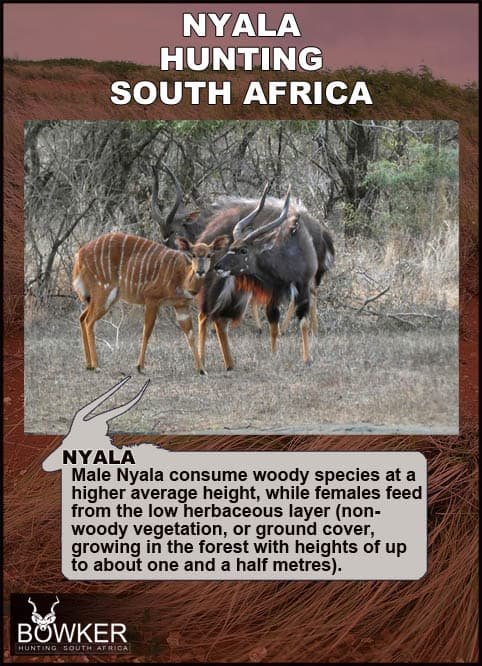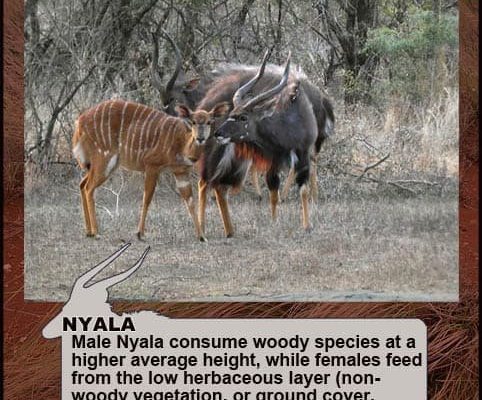
The nyala is a fascinating animal. It’s a medium-sized antelope that thrives in the thickets of savannas and woodlands. Both male and female nyalas have distinct appearances, but they share similar dietary preferences. Let’s dive into the nitty-gritty of what these intriguing creatures eat and how they navigate their environment to find food.
What Do Nyala Eat?
Nyala are browsers, which means their diet mainly consists of leaves, shoots, fruits, and flowers. They have a special knack for finding food in their bushy habitat, where they can munch on various plants that are often overlooked by other animals. This adaptability is key to their survival, especially in seasons when food is scarce.
Dietary Preferences:
- Leaves and Shoots: Nyala particularly enjoy tender leaves from trees and shrubs. Species such as acacia and wild fig are favorites.
- Fruits: During the fruiting season, they munch on berries and fruits, which provide a sweet boost of energy.
- Flowers: When in bloom, flowers can also be part of their diet, adding variety to their meals.
- Grass: While they primarily favor browsing, they’ll also graze on grasses when necessary, especially in open areas.
These dietary habits come from their need to forage in a landscape that’s both rich and challenging. They have evolved to exploit their surroundings, ensuring they can thrive even when competition for food increases.
Natural Foraging Behavior
Nyala are not just passive eaters; they are skilled foragers. They use a combination of keen eyesight and sense of smell to locate food. Their natural habitat offers plenty of cover, allowing them to browse without being easily spotted by predators.
Foraging Strategies:
- Selective Browsing: They are choosy eaters, often taking the time to pick the most nutritious leaves and shoots, ensuring they get the best possible diet.
- Seasonal Variation: Their foraging habits change with the seasons. When some plants are plentiful, they shift their focus to exploit what’s available.
- Height Advantage: Males are generally larger and can access higher branches, whereas females are more agile in dense underbrush, allowing both sexes to maximize their food intake.
Here’s the thing: nyala can often be seen foraging in small groups. This social behavior not only helps them keep an eye out for predators but also allows them to share knowledge about the best feeding spots.
Predators and Survival Strategies
Despite their graceful appearance, nyala are preyed upon by various predators, including lions, leopards, and hyenas. To stay safe, they rely on some clever survival strategies. These strategies involve both physical adaptations and behavioral tactics that enhance their chances of evading these threats.
Survival Tactics:
- Camouflage: Their brownish-gray coats and white stripes help them blend into the dappled light of their forested habitats. Staying hidden is vital for their survival.
- Vigilant Behavior: Nyala are often on high alert. They’ll lift their heads frequently while feeding to check for danger.
- Flight Response: If threatened, they can sprint away quickly, using their agility to escape from predators.
Honestly, their ability to adapt to both their diet and their environment is what sets them apart. Nyala are not just passive victims; they are active players in their ecosystems.
Group Dynamics and Feeding Behavior
You might be wondering how group dynamics impact their feeding. Nyala typically live in small groups, usually consisting of females and their young, while males are often more solitary or form small bachelor groups. This social structure influences how they find food and stay safe.
Feeding in Groups:
- Safety in Numbers: Foraging in groups allows them to detect predators more efficiently. With multiple eyes watching out, they’re more likely to spot danger early.
- Sharing Information: Members of a group can communicate and share knowledge about good foraging spots, which is beneficial for survival.
- Hierarchy: In some cases, dominant individuals may have first choice of food, but younger or more agile members find ways to sneak in for a meal.
This social aspect of their lives not only contributes to their safety but also adds depth to their foraging behavior. It’s fascinating to watch how these dynamics play out in the wild.
Seasonal Changes and Adaptations
The seasons significantly impact the nyala’s diet and hunting strategies. During the wet season, food is abundant, while the dry season can make finding food much more challenging. Their adaptability is key to thriving in such varying conditions.
Seasonal Adaptations:
- Diet Changes: In the wet season, when grasses are lush and green, they shift their eating habits, taking advantage of the richer food sources. In the dry season, they might rely more on the leaves and twigs of shrubs.
- Increased Mobility: During tough dry periods, nyalas may venture further to find food, sometimes even leaving their usual home ranges.
- Social Structures: Group sizes may change based on the availability of food, with larger groups forming during the wet season when food is plentiful.
This resilience is what allows them to adapt and thrive in their habitats, no matter the environmental challenges they face.
The Importance of Habitat Preservation
With their unique diets and survival strategies, nyala play a vital role in their ecosystems. However, habitat destruction and human encroachment threaten their populations. Protecting their environment is crucial not only for the nyala but for the health of the entire ecosystem.
Conservation Needs:
- Protected Areas: Establishing and maintaining wildlife reserves help ensure that nyala and other species have safe habitats to thrive.
- Community Awareness: Educating local communities about the importance of nyala can foster coexistence and lead to better conservation practices.
- Reducing Poaching: Implementing anti-poaching measures is essential to secure the future of nyala populations.
Let me explain: when we preserve habitats, we’re not just saving individual species like the nyala; we’re maintaining the balance of nature that supports us all.
In conclusion, the nyala’s diet and hunting strategies are a beautiful dance with nature. From their selective feeding habits to their social behaviors and adaptability, these animals showcase remarkable resilience. Understanding their lives helps us appreciate the intricate web of life in southern Africa and the importance of protecting these incredible creatures and their habitats. Without conservation efforts, we risk losing not just the nyala but the entire ecosystems they inhabit.

